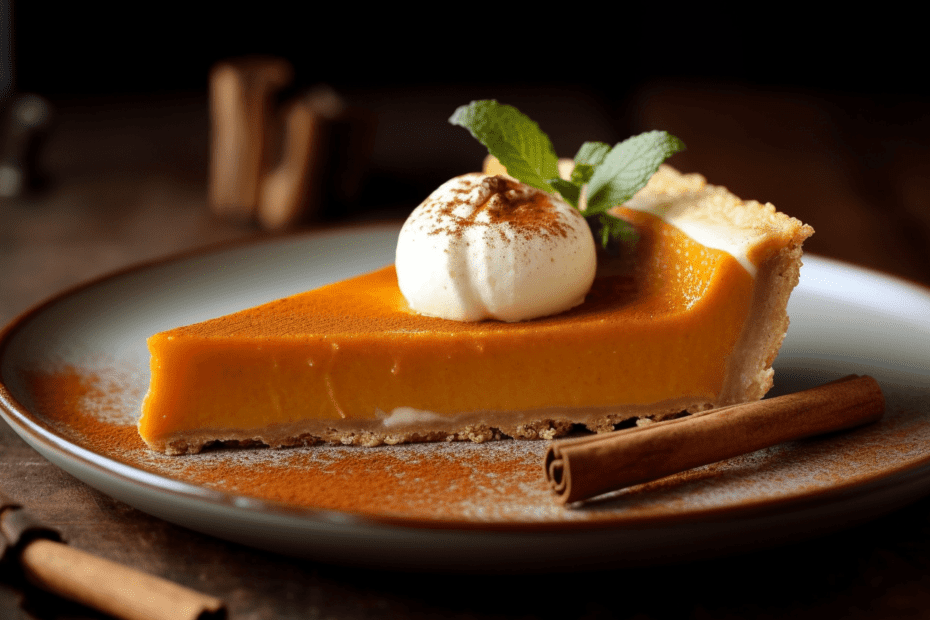Video: Why does pumpkin spice taste like cinnamon?
(Directly playing the video will automatically display subtitles in your language. If the subtitles are not in your language, you can go to Youtube to use the subtitle function.
If you like my content, you can also subscribe for more.
If you’ve ever sipped a pumpkin spice latte or savored a slice of pumpkin pie, you’ve probably noticed the strong flavor of cinnamon. Pumpkin spice has become synonymous with fall, but why does it taste predominantly of cinnamon? Let’s explore the history, science, and cultural significance of this iconic flavor blend.
What is Pumpkin Spice?
Pumpkin spice, originally known as pumpkin pie spice, is a blend of ground cinnamon, ginger, nutmeg, cloves, and sometimes allspice. Contrary to what its name might suggest, pumpkin spice doesn’t contain any pumpkin. The blend was crafted to complement the flavor of pumpkin in dishes like pumpkin pie. Introduced commercially by McCormick in 1934, the mix became exceptionally popular after Starbucks launched its Pumpkin Spice Latte (PSL) in 2003.
The Role of Cinnamon in Pumpkin Spice
Cinnamon is the dominant flavor in the pumpkin spice blend. But why is this so? The reason is quite straightforward. Cinnamon’s sweet, warm, and slightly spicy flavor makes it a versatile spice that pairs well with a variety of dishes. When combined with other spices like nutmeg, ginger, and cloves, it adds depth and complexity to the flavor profile, creating a taste that’s uniquely identifiable as ‘pumpkin spice.’
The Cultural Phenomenon: Pumpkin Spice Latte
The PSL, created as a fall beverage to parallel Starbucks’ signature holiday drinks, was a game-changer. Made with pumpkin spice syrup, espresso, whipped cream, and a pumpkin spice topping, it skyrocketed the popularity of pumpkin spice. Other coffee chains and brands followed suit, introducing their versions of the PSL and expanding the range of pumpkin spice-flavored products.
The PSL is a perfect example of how sensory experiences, especially smell, can be linked to emotions and memories, thereby influencing our preferences and behaviors. The olfactory system’s unique connection to the limbic system in our brains (the center of emotion and memory) means that a whiff of pumpkin spice can evoke warm, happy memories, like comforting family gatherings during Thanksgiving. It’s no wonder that fans eagerly anticipate the seasonal return of the PSL!
The Science Behind The Popularity
Food scientist Kantha Shelke explains that the flavor components of PSL (and pumpkin pie spice) – cinnamic aldehydes for cinnamon, eugenol for clove or allspice, terpenes such as sabinene for nutmeg, and zingiberene for ginger – are also found in universally popular drinks like Coca-Cola. This subconscious familiarity could contribute to the widespread appeal of the PSL, even in countries without the same fall traditions or Thanksgiving holiday.
In recent years, the demand for more natural, “clean” ingredients has led Starbucks to include actual pumpkin puree in their PSL recipe. While this addition doesn’t drastically alter the flavor profile, it enhances the perceived authenticity and quality of the drink, aligning with modern consumer trends.
Conclusion
Whether you’re a fan or not, it’s hard to deny the profound impact that pumpkin spice, spearheaded by the PSL, has had on our fall traditions and food culture. This blend of spices, led by the aromatic and sweet flavor of cinnamon, has evolved far beyond its original purpose of flavoring pumpkin pie. Today, it’s a symbol of comfort, nostalgia, and the warmth of the fall season.
